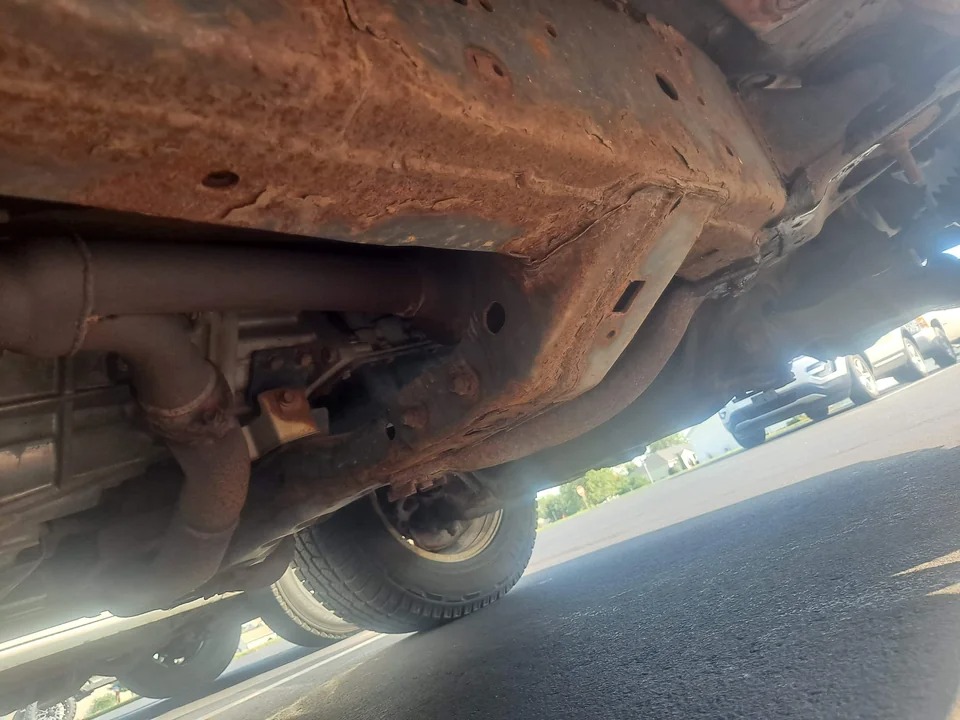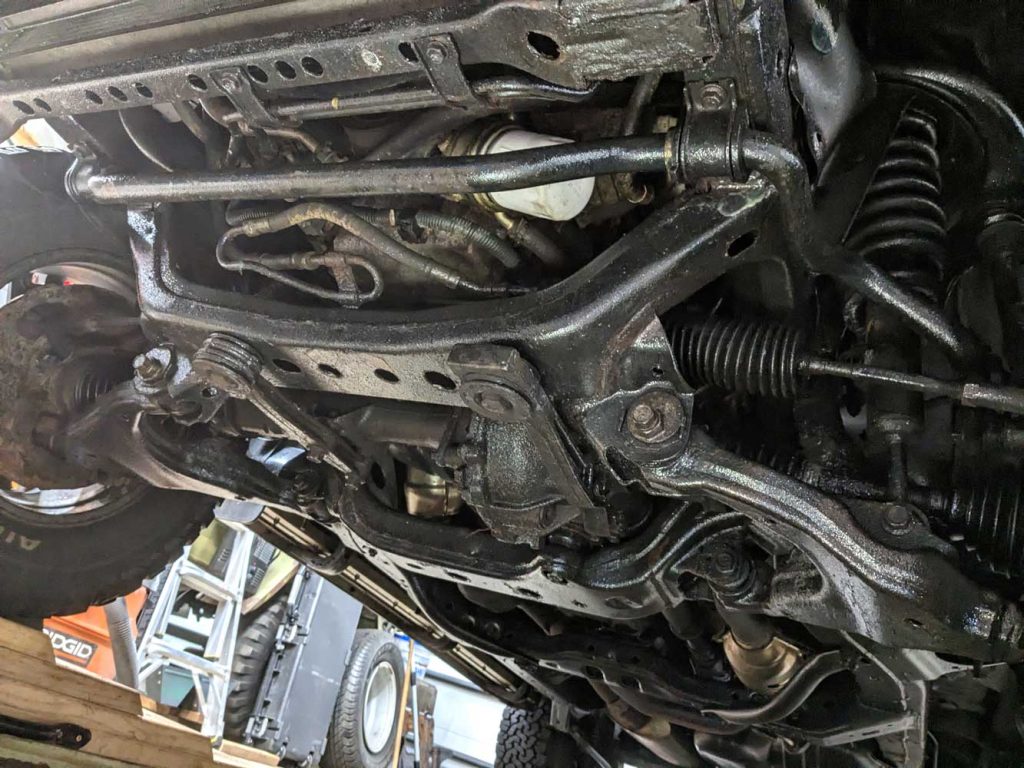Part 1, Lanolin is The Way
Bottom lines at the top: Yes, undercoating can help to stop rust. Based on my research and experience, I recommend wet film lanolin coating for any salt belt vehicle, new or old. I generally would not use rubberized or paint-type dry coatings, apart from some particular circumstances – and even then, I would still use a wet film coating over the top.
Here’s a link to one of the best demonstrations of the efficacy of wet-film lanolin coating, from the Repair Geek YouTube channel — a side-by-side comparison of 7-year-old trucks in Ohio, coated vs uncoated. Below is a screenshot showing comparison of just one part (they wiped the undercoating off of the clean part on the right to show the condition underneath).

Vehicle rust is inevitable here in the salt belt north (wherever roads get salted in the winter). By the time most of us notice it’s a problem, it’s already eaten through body panels or frame rails. In my experience, wet film lanolin undercoating is our best defense against rust to extend the life and preserve the value of our vehicles. Wet film lanolin coatings don’t dry out, will self-heal over small scratches, will migrate through cracks, and are relatively easy and cost-effective to maintain. Particularly here in the salt belt, it looks to me like return on investment is net positive for Woolwax/Fluid Film application at almost any vehicle life stage, unless the metal is just too far gone and structurally compromised already.

The Naval Surface Warfare Center tested and reported on the use of Woolwax/Fluid Film on shipboard cargo/weapons elevators and other equipment using rails: “superior performer of all tested materials… reducing the maintenance schedules… from quarterly to annually… estimated savings of over six figures.”
Lanolin undercoating can be helpful to slow the advance of rust even if a significant amount has already taken hold. But far better to get it coated earlier—anywhere from brand new with zero rust to the surface rust that can develop within even a few years around here. Here’s a helpful overview video resource with some notes on undercoating a vehicle with existing rust (also why rust occurs, how to prevent it, how dry rubber/paint coatings fail, and how wet film lanolin coatings work).
Lanolin is an oil derived from sheep wool. I prefer working with this in my shop and on my vehicles since it’s a non-toxic organic material (petroleum-based products like Cosmoline are toxic, flammable, etc). I also like that it’s safer for the environment, since coatings wash off over time and end up on roads and drains into the watershed.
Coating metal with oil is an age-old method that works to prevent rust by isolating it from water and air, the elements required for the oxidation process. Since the 1940s, Fluid Film/Woolwax has been used by military, NASA, and many other aerospace, industrial, and municipal entities:
- originally developed and tested for US Navy vessels in the 1940s
- US military specifications: MIL-R-21006, MIL-C-23050, MIL-PRF-18458C, and exceeds MIL-C-16173
- used by US military on nuclear submarines
- used by NASA on the space shuttle
Ideally, you can start with the metal as clean and dry as possible. But oil can also work to displace moisture away from the metal surface to the outside of the coating. Because of these properties, not a lot of prep is needed to get pretty much maximum benefit if you’re in the surface rust zone, or anything short of deep flaking rust. The University of Connecticut Department of Metallurgy and Materials Engineering studied and reported: “[Woolwax/Fluid Film] effectively reduces corrosion of 2024 aluminum in aqueous brine and, perhaps of greater significance, it is nearly equally effective when applied to the alloy after exposure to a corroding environment.”
The oil will soak and creep into any existing rust and for the most part will stay there for multiple years. Even with regular car washes through the year, including underbody flush, 90% of my surface area coverage is usually still there a year later. The places most prone to wash-off are around the tires where driving on wet or slushy roads can create a high pressure spray. For those areas, and for additive coverage on the rest of the underbody, annual re-application is generally recommended. Here are some time-span video reviews of oil coatings after 3 years, 4 years, and 5 years.

Product Recommendation
Woolwax is the best solution I’ve found for rust protection. I’ve used it on my own vehicles with success, and I offer undercoating service for my clients (contact me). Fluid Film is similar to Woolwax, but thinner and has a stronger odor. Though I haven’t used it, B’laster Surface Shield is another comparable lanolin-based coating that looks good. It costs quite a bit more by volume compared to Woolwax – originally it was about double, though pricing has changed over time. I’m monitoring value considerations on these products – Surface Shield could still be a good value with its two-year vs one-year recommended reapplication schedule. Update — Surface Shield pricing has come down significantly (May 2025), I even found a 5-gallon bucket for less than the usual price of Woolwax, so I’ve picked some up and will give it a go. I’d have to see how it actually holds up for those two years in high wash-off areas, which is likely the only differentiating area that would matter. I have no product sponsors or affiliations.

